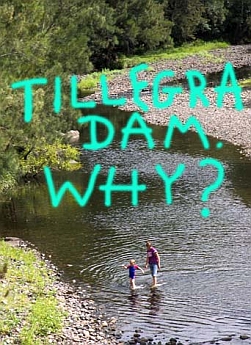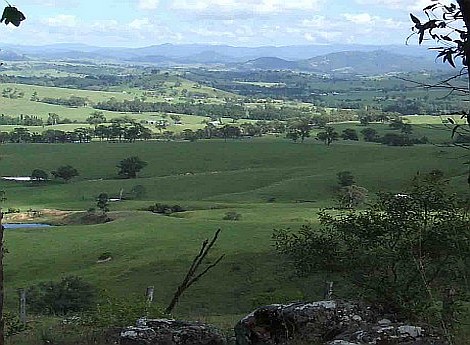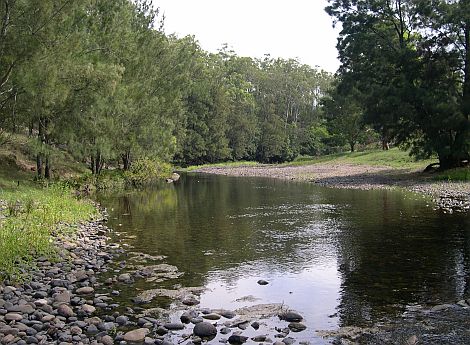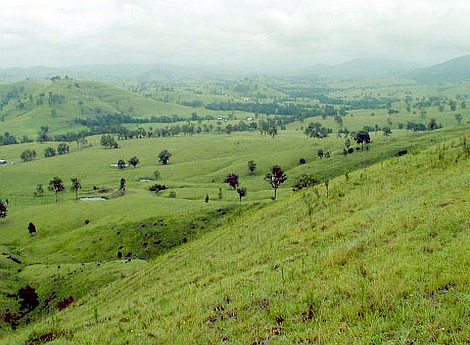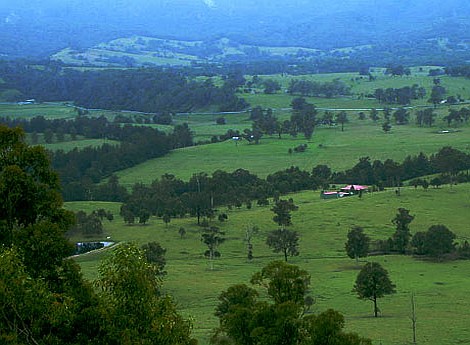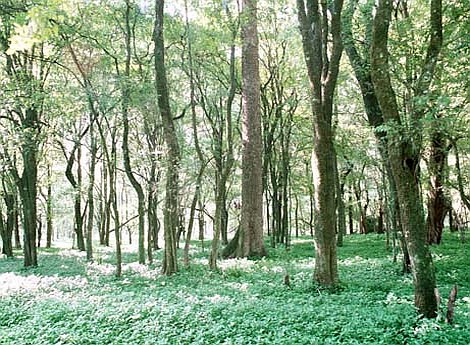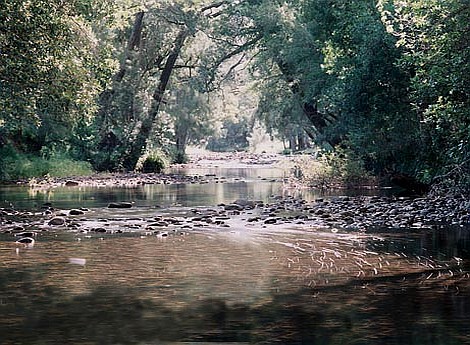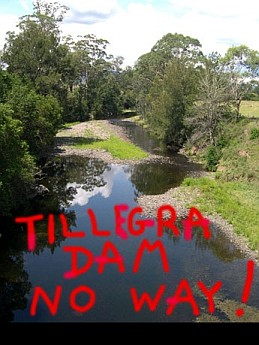River of Hope
The article below was written by Dungog resident Fran Crane and an abridged version of it was published in the Newcastle Herald.
River of hope-but doomed to be dammed
It’s mid-winter and cold amidst the rolling hills and fertile river flats of Dungog, in the Hunter Valley. On a bend of the Williams River, overhung with ancient ironwoods and casuarinas, a man in a wet-suit plunges into the icy water. He scours the rocky river-bed for hours, sometimes even days on end, searching for something, something quite unassuming in appearance but something he regards as special and of great value. That “something” is fresh-water mussels.
To those in the Dungog area who know him, Dr. Hugh Jones is fondly referred to as the Mussel Man and they do indeed regard him as a hero, if not in the orthodox sense. The molluscs he goes in search of with such stoicism have been the focus of his research for a number of years. To have the experience of a conversation with Hugh on the subject of these creatures, to observe the tenderness, respect and affection with which he handles his hard-won treasures, the tone of quiet awe and fascination as he points out the growth rings on a thirty-year-old specimen, is a unique and inspiring one. It’s an awakening to the wonders and complexities of some of the other life-forms with which we share habitats but don’t always notice or fully appreciate.
The mussels are a very significant indicator, being filter feeders, of the health of the river system and Hugh Jones and fellow scientists who’ve been studying the water-ways of the Hunter Valley in recent years have good news for the human inhabitants on the banks of the Williams-this river, despite human intervention in various forms over the years, is in very good shape compared to all the others. And with a little extra care, could be even better.
In a recently-released report with a large bibliography of related readings, the final analysis is that “The Williams River has the most diverse and intact aquatic biotic communities in the Hunter Valley”. Phrases from the report detailing specific data are poetic in the images of bounty and healthfulness they conjure: “short-finned eel-abundant, Cox’s gudgeon-abundant, diverse and abundant mussel fauna, a rich and diverse macro vertebrate fauna which is in healthy condition in most places.” And this is to quote but a tiny proportion of the study’s findings.
Under normal circumstances, this information would be cause for jubilation and celebration in a rural community. But sadly, in Dungog it only serves to sharpen the pain, anger and sense of loss currently being felt by a large number of its population.
The prospect of the Tillegra Dam project, announced by the Iemma government late last year, casts a deep shadow, not only over the lives of those displaced, whose picturesque and productive land is in the inundation area, but also over all those downstream of the dam. There are the long-term residents born and bred here who’ve swum and fished in the river’s flows since childhood and farmed its flats, whose lives have always been linked to its rhythms and seasons. And there are the new settlers who’ve come here in search of a cleaner, greener more hopeful future for themselves and their families, prepared to make big financial and personal investments, delighted to find an environment like this still exists. But it seems the state government and Hunter Water are intent on dashing their hopes.
Many experts from scientific and business spheres such as Charles Essery, have firmly and loudly and with much factual support and expertise behind them, declared their opposition to the dam project. They have exposed its economic irrationalism, demonstrating that it is an unnecessary measure which will be exorbitantly costly to taxpayers and water-users and lucrative for the government. The recent flooding rains in the Hunter and Central coast beg the question-“Surely there’s a better, more cost-effective and less damaging way?” Not to mention the fears geological experts have in regard to the suitability of the site. The cost environmentally of course must be added to the debit side of the balance sheet.
Those like Hugh Jones who have a deep knowledge of the importance of healthy eco-systems to our future, know the loss, in the form of damage to the river, when the dam stems the river’s natural flows, freshes and floods, will be beyond measure. Others know it intuitively and grieve equally.
Eerily, the drought which has been plaguing much of the country seems reflected in the barren imaginations of many of our leaders. There seems a deliberate blindness and incapacity to learn from the devastating mistakes of the past, at a time when we desperately need them to have the vision and courage to develop and foster initiatives that re-kindle hope, particularly in our young people. The care of our river systems in particular, is too important an issue to be left in the hands of mediocre politicians who treat them as political footballs rather than the crucial and precious life-support systems that they are.
The brave and passionate campaigner for human rights and the environment, Indian-born Arundhati Roy, in her book The Cost of Living, sums up the destruction caused when governments, for their own self-interested reasons, decide to build Big Dams:
“They represent the severing of the link, not just the link-the understanding—between human beings and the planet they live on. They scramble the intelligence that connects eggs to hens, milk to cows, food to forests, water to rivers, air to life and the earth to human existence.”
Roy asks, “Can we unscramble it?” It would be heartening to think that in an affluent, educated and democratic country like Australia there is a good chance we can. That in the case of Tillegra Dam, our leaders will see sense, rise to the challenge of their role and listen. If they do they will hear the quiet but insistent and impassioned voices of people like Hugh Jones, urging them to re-think. The saying goes that Hope springs eternal. Is it too much to hope that the Williams River can remain, in every sense and forever, not just a spring but a whole, healthy, flowing river of hope?
Fran Crane
Teacher, Dungog resident
